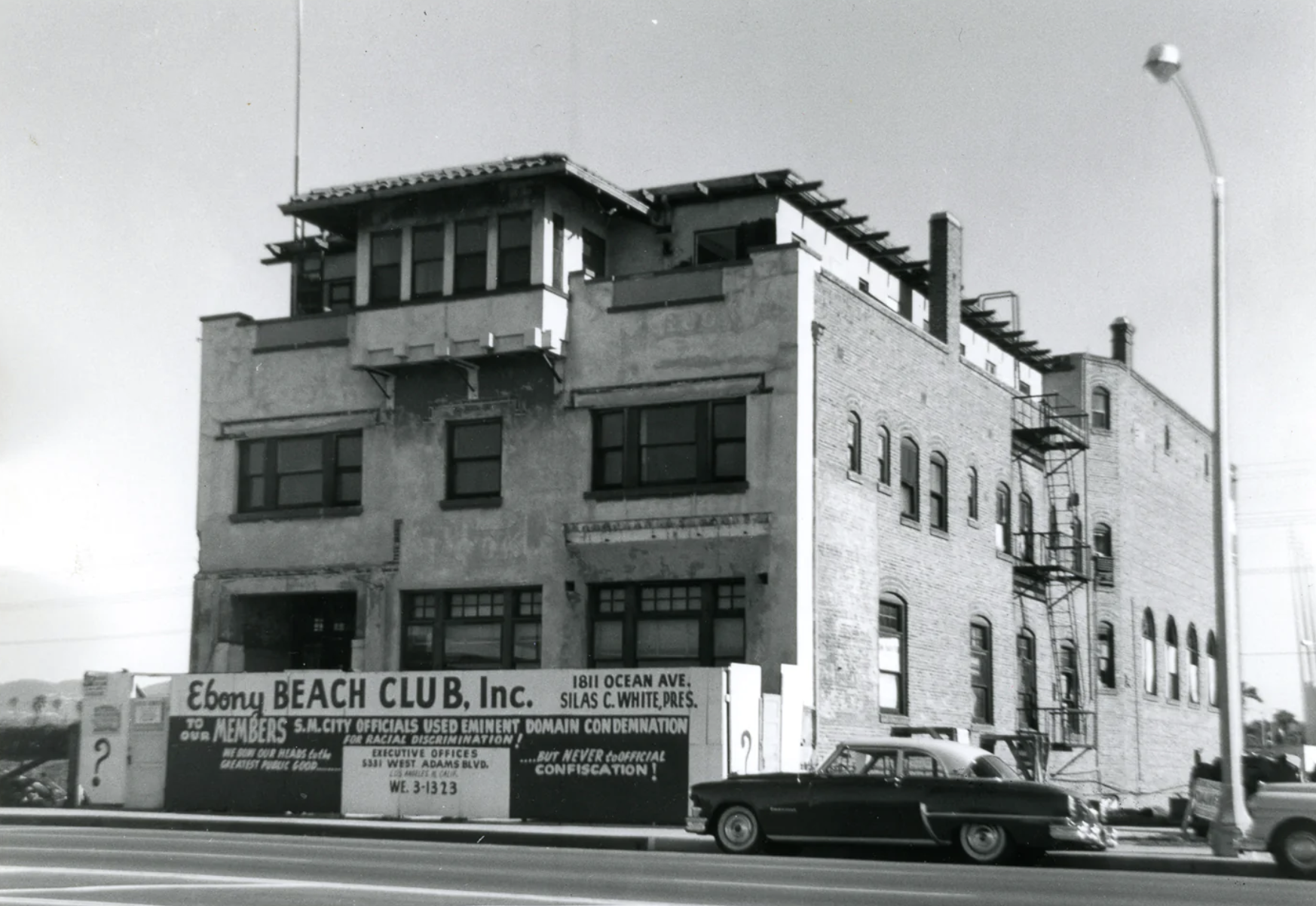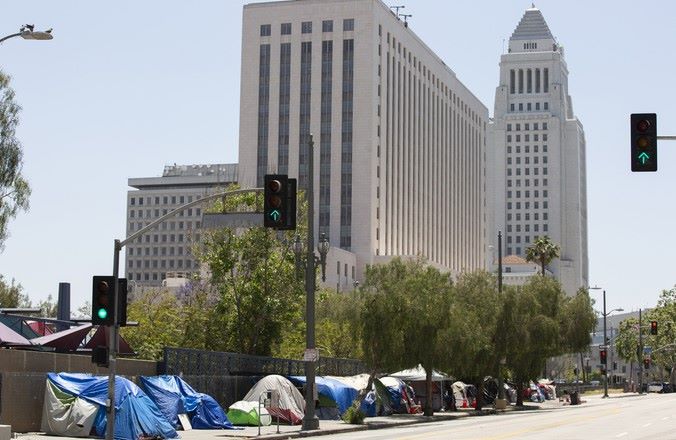It was the last Wednesday of the month, and that meant the monthly meeting of the Santa Monica Democratic Club at Virginia Avenue Park. On March 27, the Club hosted a panel to talk about efforts that have been underway to develop a system of restorative justice and reparations for Black Californians. About 75 attended in person or over Zoom, and several dozen members of the community have since viewed video of the meeting on YouTube.
Many are unaware that slavery was practiced in California despite being admitted to the Union as a free state in 1850. In addition, Californians captured escaped slaves and returned them to their enslavers. And beyond the Civil War, Black Californians suffered discrimination in housing, hiring, schooling, abuse by law enforcement, and more.
There are local efforts underway as well. Last week, led by Councilmember Caroline Torosis, the Santa Monica City Council voted to approve an effort that will follow several steps to investigate if and how justice can be delivered to the descendants of Silas White and others who had a stake in his dream of the Ebony Beach Club, a safe and welcoming recreation center for Black Santa Monicans and other neighboring Black families. Before the dream could be realized the city seized the property through Eminent Domain and the club was demolished in January 1960. City Staff will return in 90 days with recommendations for how the council can proceed.
The move follows the County’s efforts in 2022 to return the ownership of the property known as Bruce’s Beach to the heirs of Charles and Willa Bruce. The County now pays an annual lease to the family for use of the land.
Club President Jon Katz prefaced remarks by speakers saying that club leadership has encouraged specific stands on specific issues at many monthly meetings, but that this discussion was more open-minded regarding potential outcomes. “This is really a listening session,” he said. “I certainly support making right some of the past wrongs in the city, but I don’t know how to prescribe how we do that.” He added, “We’re here tonight to learn about what this means and how we can proceed as a city.”
The speakers included:
- Assemblymember Reggie Jones-Sawyer
- Loyola Marymount University Professor Cheryl Grills, Ph.D.
- Shawna Charles of the Charles Communications Group who worked with the California Reparations Task Force and currently works with the California Legislative Black Caucus
- Founder of Justice for Bruce’s Beach and Where Is My Land, Kavon Ward
- Councilmember Caroline Torosis
Dr. Grills spoke first and set the table well for reparations overall. She started with an apt quote from Malcolm X, who said, “If you stick a knife in my back nine inches, and pull it out six inches, there’s no progress; If you pull it out all the way, that’s not progress. The progress is healing the wound that the blow made.”
She made the point that most Americans really don’t know the true history of this country. “We need to ask for a tax refund on the quality of education we’ve received in this country, especially when it relates to history.”
A prime example, Grills explained, is Columbus Day. It only came about when 11 Italian-Americans were lynched. The kicker is that not only did President Benjamin Harrison create the holiday honoring the Italian explorer as a response, but he paid $25,000 in reparations (about $125,000 in today’s dollars) to each of the Italian-American victims’ families. Cross that with a new report she cited that states there were 6,500 documented (imagine the undocumented number) lynchings of African Americans between 1877-1950. Only three Black families received reparations in those cases.
“This is our untold story,” Grills said. “This is the agony that lies deep within.”
She defined reparations as “Responses – programmatic, financial, and healing that are justified on the basis of past harms, the legacy of those harms, and continued current harms. Reparations are designed to assess and correct the harms and improve the lives of the victims into the future.”
Dr. Grills served on the California Reparations Task Force, and said they were asked when they began their work to align their solutions with a United Nations standard with five tenets:
- Satisfaction – requires an acknowledgment of the harm and an apology for it
- Compensation – directed to a specific group of individuals harmed, including descendants
- Restitution and repatriation – restoring aggrieved parties to the position they were in before the harm was made
- Guarantees of no repetition of the harm – implementing systems, institutions, and practices that ensure harmful practices can’t happen again
- Rehabilitation – providing legal, medical, psychological, and other forms of care
She made the point that restitution and repatriation are a challenge for African Americans because they have never not been in a position of harm in this country.
She also reminded audience members that harm wasn’t just committed during the time of slavery, as many reparations skeptics come at the issue with statements like, “I didn’t own any slaves,” or “I wasn’t around back then,” but she countered by saying Americans are bound by a social contract that we are responsible to one another and “At some point, we have to care about the greater good and not just I, I, I, I, me, me, me, me.” She further reminded the audience that harms are still being perpetrated today.
“If we seem a little frustrated, and short on patience, it’s been 400 years in the making,” she stated. But later, after a short history on the first claim for reparations in 1783, said, “Action by the federal government has been – to be frank – shameful. And it flies in the face of all these so-called American ideals of equality, rights, liberty, opportunity, and even democracy.”
Sadly, the only people who received the reparation of “40 acres and a mule,” were the white confederates, whose land – that had been set aside for African Americans – was returned to them by President Andrew Johnson.
The most recent push was initiated after the Civil Liberties Act of 1988 granted reparations to Japanese Americans interned during WWII. Michigan Congressman John Conyers, whose constituent – Reparations Ray Jenkins – was “relentless” in encouraging him to take up the mantle of reparations. Conyers introduced a bill in 1989 to establish a commission “to study reparations for African American enslavement and post-enslavement legacies.” She says he introduced the bill “Year after year after year until he died,” when Congresswoman Sheila Jackson Lee of Texas “took up the baton.”
Dr. Grills did say that Congress issued an apology for slavery, but that it has no teeth or sincerity to it. In fact, she said the apology even has a clause that warns against trying to use the apology as a basis for any kind of financial claims against the U.S. government.
The California Reparations Task Force conducted 17 listening sessions with over 900 participants, a community poll of more than 4,000 people conducted across the state. Grills also said they heard from more than 100 expert witnesses and the task force created an interim report of almost 500 pages “Detailing 12 chapters of harm,” or categories or areas of harm, followed by a final report of about 1,100 pages detailing recommendations for repair tied to the 12 categories.
Since the sunset of the task force, six of nine members have formed an organization known as the Alliance for Reparations, Reconciliation, and Truth (ARRT) made up of “A powerhouse of community organizations.”
Assemblymember Reggie Jones-Sawyer spoke about descendants of slaves who testified and could pass on handed-down stories of the abuses their forbearers endured. “You could really hear their souls coming through the floors, coming through the walls,” said Jones-Sawyer.
He focused his remarks on “The bread and butter that comes now” since the task force has submitted its recommendations. In discussing his campaign “Restore Black California for All Californians,” the Assemblymember said, “I have a responsibility – along with [State Senator] Steve Bradford and the entire Legislative Black Caucus – to reverse this river of racism that’s been running through our communities for decades.”
He explained that the bills selected for the initial package of reparations legislation “Were selected because we know how to count votes.” Each would require 41 votes in the Assembly and 21 in the State Senate, and he said there are only 12 total Black members in the entire legislature. “We do not have enough votes to carry it by ourselves.”
“If we get our reparations,” he went on, “Then women, Native Americans, Latinos, API, LGBTQ, and others who have been aggrieved can also get their reparations.” He thinks this is just the beginning, but says efforts on behalf of African Americans can be a good “Litmus test of the courage of our colleagues” to assess how future efforts would go.
One of his bills, AB 3152, will act like the G.I. Bill, creating a framework for education grants or vocational training, home ownership assistance, career training, and start-up business assistance by creating a tax on the eight products that benefitted most from slave labor.
Dr. Shawna Charles spoke about the responsibility the California Legislative Black Caucus has to translate the more than 300 recommendations from their final report into pieces of workable legislation.
One of the main targets will be the wealth gap. The median white family’s net worth in Los Angeles is $355,000 while the median Black family’s is just $4,000. “This doesn’t happen overnight,” said Charles. “It happens over years and years and years of oppression.”
But she also said that wealth isn’t just financial and that there are gaps in safety, health, education, employment opportunities, and appreciable assets that make up a holistic well-being.
As the crowd broke to take a short poll (We encourage you to take it –https://www.menti.com/alxstcbfegke), Jones-Sawyer broke in to say he heard a gasp come over the room at the sight of the wealth gap slide of Dr. Charles’ presentation. He asked if that caused any audience members to say, “Oh my God!” to which there were several yeses. “Is that important for us to let people know?” the Assemblymember asked, to which there were several affirmative responses.
“That number is one of many,” said Charles, adding that many statistics in the task force report would make audience members gasp.
Kavon Ward, who founded Justice for Bruce’s Beach, and Councilmember Torosis then discussed the issue of the Ebony Beach Club referenced earlier.
Ward explained that Black entrepreneur Silas White owned several businesses in Santa Monica before he got the idea to purchase the old Elks Lodge and convert it into the beach club. She says when the city caught on to his plans for the club, “They killed his dream.”
Sadly, White died shortly after the club was torn down in 1960. “Not only was his dream killed, but I believe that the immense amount of racism and fight he had to endure to try to make Ebony Beach Club happen killed him.” She then pointed out Mr. White’s niece in the audience, Milana Davis, who had told Ward that she never heard the story when she was young because her mother, Connie White, never talked about it. But having heard about the Bruce’s Beach victory in 2022, Connie had the confidence to reach out to Ward and ask if she could help get her family’s land back as well.
So Ward and Connie sent a “scathing letter” to each Santa Monica City Council member and the city manager. “And only Caroline got back to us,” she said.
“We’ve made it very clear we want the land back and compensation for over 60 years of lost business enterprise,” said Ward.
Torosis said that while her day job working for Supervisor Holly Mitchell is not as a housing deputy, her work for the county familiarized her with what went into the county’s actions regarding Bruce’s Beach and what may be needed for the Ebony Beach Club.
“It’s never convenient to do the right thing,” said Torosis. “It was the perfect opportunity when I saw this email [the letter] because – I was like, ok, great – there are people who are interested and honestly, if it weren’t for the pressure and the work that she [Ward] and the White family put in…I don’t think the council would have voted unanimously because public pressure matters.”
“I have no illusions that this is going to happen in 90 days, but what’s important is in 90 days when the recommendations come back, that we still have community at the table because it’s not one-and-done…there’s way more work still to do,” she added.
Westside Voice will continue to report on progress regarding restorative justice for the Ebony Beach Club and the White family as it continues.
Stay informed. Sign up for The Westside Voice Newsletter
By clicking submit, you agree to share your email address with Westside Voice. We do not sell or share your information with anyone.








